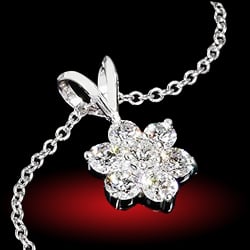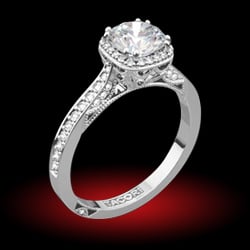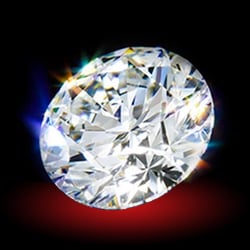Venzen007
Shiny_Rock
- Joined
- Dec 22, 2008
- Messages
- 212
As I'm looking over the myriad of setting design elements, from the basket, to the prong types, to the possibility of various bezels, I'm find myself wondering how the placement of metal will affect the face-up appearance of the stone in terms of its light performance and internal patterning, and on an asscher, particularly.
Some light, no doubt, comes in through the steps on the crown and is reflected back out to the viewer. I'd imagine, then, as metal is placed over various sections of those areas which would normally receive light, that light-receiving area will be reduced by some number of square micrometers as a function of the amount and placement of the metal.
Other than that (maybe imperceptible) reduction in light quantity, is there any consideration for whether any aspect of the setting design could be picked up by the diamond's virtual facets so that it's internal patterning is altered in a discernible way? In the case of an asscher, for example, would prong placement (e.g. over the clips vs. the longer edges) alter the appearance of the diamond's internal patterning? Would prong shape (e.g. talon, ball, partial bezel) potentially have an effect on the same?
Next, is it just from the girdle up that needs to be considered? I imagine that the pavilion facets are not meant to "receive" light and send it out through the crown and table. Is that a correct understanding? Is there less to consider, then, in terms of how the stone is covered by the setting design below the girdle? If less to consider, is there still some consideration to allow the pavilion some direct light, and why, or what effect would blocking more of the pavilion from direct light have versus leaving much of the pavilion section exposed to direct light?
What do you think, @Karl_K, @diagem ,@Garry H (Cut Nut), and anyone else who may has this sort of technical understanding? Before I start considering design elements, I want to be sure I'm as solid as I can be on these things.
Some light, no doubt, comes in through the steps on the crown and is reflected back out to the viewer. I'd imagine, then, as metal is placed over various sections of those areas which would normally receive light, that light-receiving area will be reduced by some number of square micrometers as a function of the amount and placement of the metal.
Other than that (maybe imperceptible) reduction in light quantity, is there any consideration for whether any aspect of the setting design could be picked up by the diamond's virtual facets so that it's internal patterning is altered in a discernible way? In the case of an asscher, for example, would prong placement (e.g. over the clips vs. the longer edges) alter the appearance of the diamond's internal patterning? Would prong shape (e.g. talon, ball, partial bezel) potentially have an effect on the same?
Next, is it just from the girdle up that needs to be considered? I imagine that the pavilion facets are not meant to "receive" light and send it out through the crown and table. Is that a correct understanding? Is there less to consider, then, in terms of how the stone is covered by the setting design below the girdle? If less to consider, is there still some consideration to allow the pavilion some direct light, and why, or what effect would blocking more of the pavilion from direct light have versus leaving much of the pavilion section exposed to direct light?
What do you think, @Karl_K, @diagem ,@Garry H (Cut Nut), and anyone else who may has this sort of technical understanding? Before I start considering design elements, I want to be sure I'm as solid as I can be on these things.
Last edited:







300x240.png)